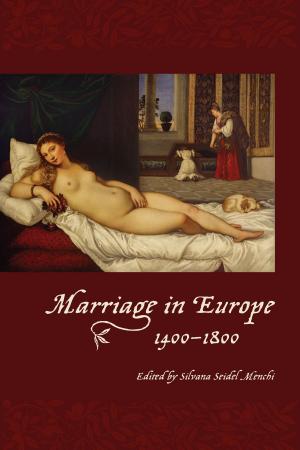Beastly Possessions
Animals in Victorian Consumer Culture
Nonfiction, History, British, Social & Cultural Studies, Social Science, Sociology| Author: | Sarah Amato | ISBN: | 9781442617605 |
| Publisher: | University of Toronto Press, Scholarly Publishing Division | Publication: | November 26, 2015 |
| Imprint: | Language: | English |
| Author: | Sarah Amato |
| ISBN: | 9781442617605 |
| Publisher: | University of Toronto Press, Scholarly Publishing Division |
| Publication: | November 26, 2015 |
| Imprint: | |
| Language: | English |
In Beastly Possessions, Sarah Amato chronicles the unusual ways in which Victorians of every social class brought animals into their daily lives. Captured, bred, exhibited, collected, and sold, ordinary pets and exotic creatures – as well as their representations – became commodities within Victorian Britain’s flourishing consumer culture.
As a pet, an animal could be a companion, a living parlour decoration, and proof of a household’s social and moral status. In the zoo, it could become a public pet, an object of curiosity, a symbol of empire, or even a consumer mascot. Either kind of animal might be painted, photographed, or stuffed as a taxidermic specimen.
Using evidence ranging from pet-keeping manuals and scientific treatises to novels, guidebooks, and ephemera, this fascinating, well-illustrated study opens a window into an underexplored aspect of life in Victorian Britain.
In Beastly Possessions, Sarah Amato chronicles the unusual ways in which Victorians of every social class brought animals into their daily lives. Captured, bred, exhibited, collected, and sold, ordinary pets and exotic creatures – as well as their representations – became commodities within Victorian Britain’s flourishing consumer culture.
As a pet, an animal could be a companion, a living parlour decoration, and proof of a household’s social and moral status. In the zoo, it could become a public pet, an object of curiosity, a symbol of empire, or even a consumer mascot. Either kind of animal might be painted, photographed, or stuffed as a taxidermic specimen.
Using evidence ranging from pet-keeping manuals and scientific treatises to novels, guidebooks, and ephemera, this fascinating, well-illustrated study opens a window into an underexplored aspect of life in Victorian Britain.















